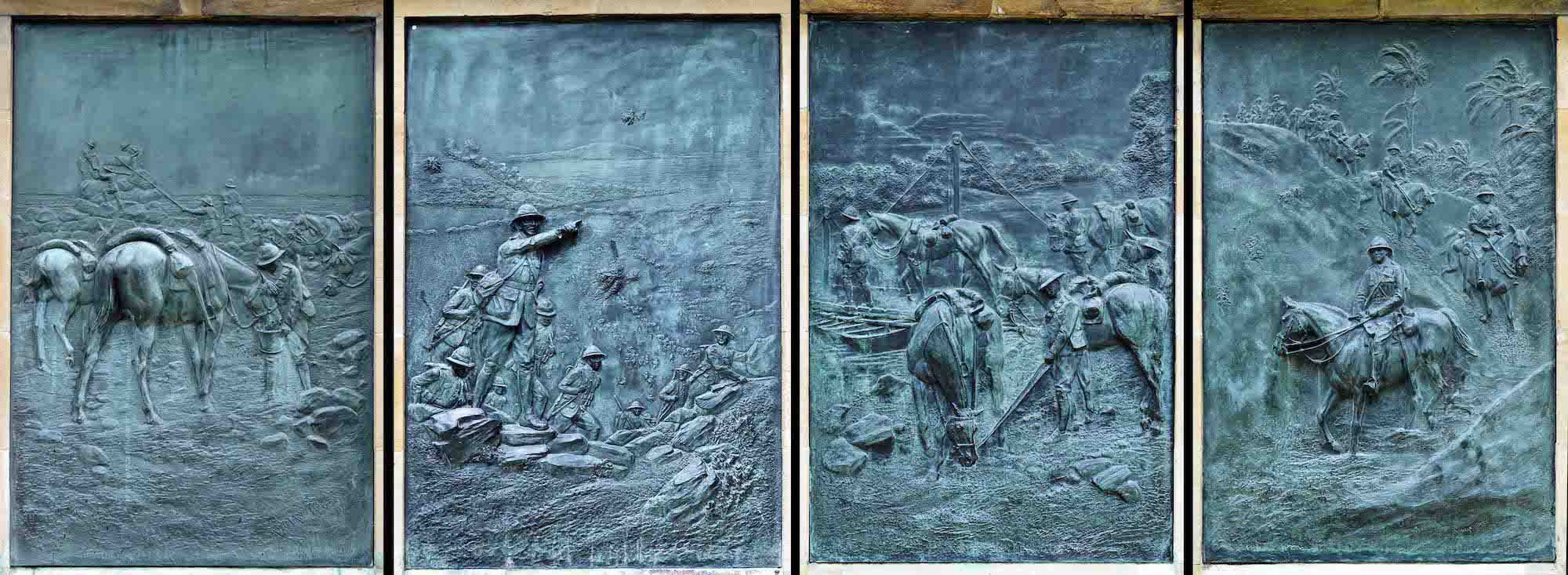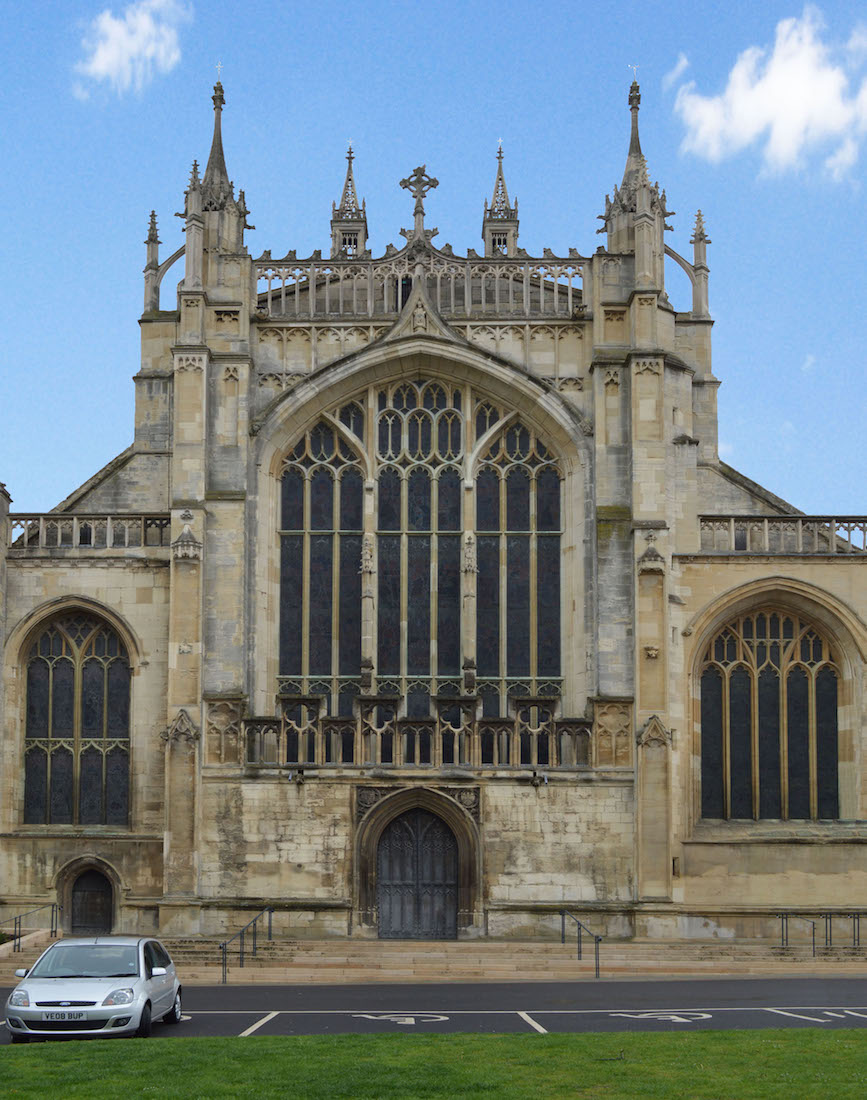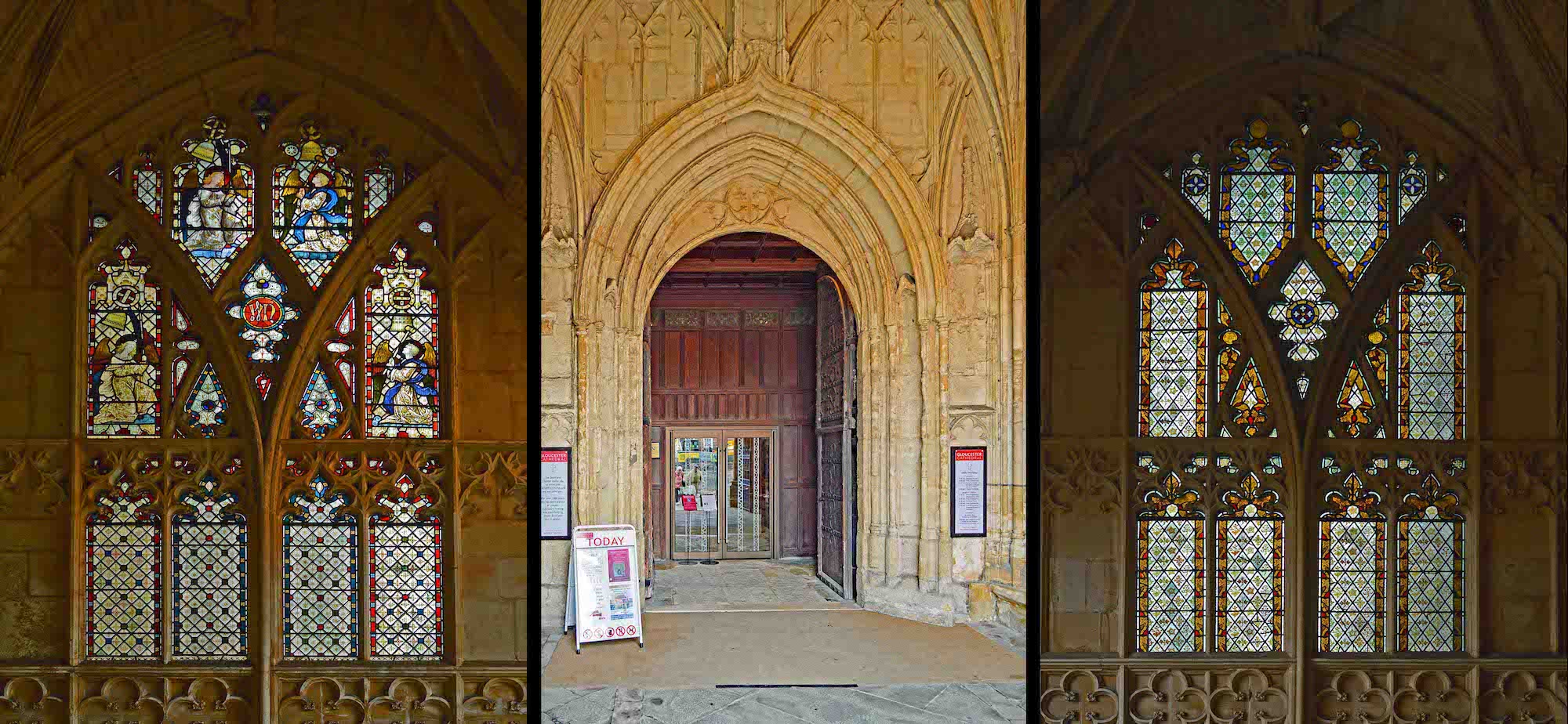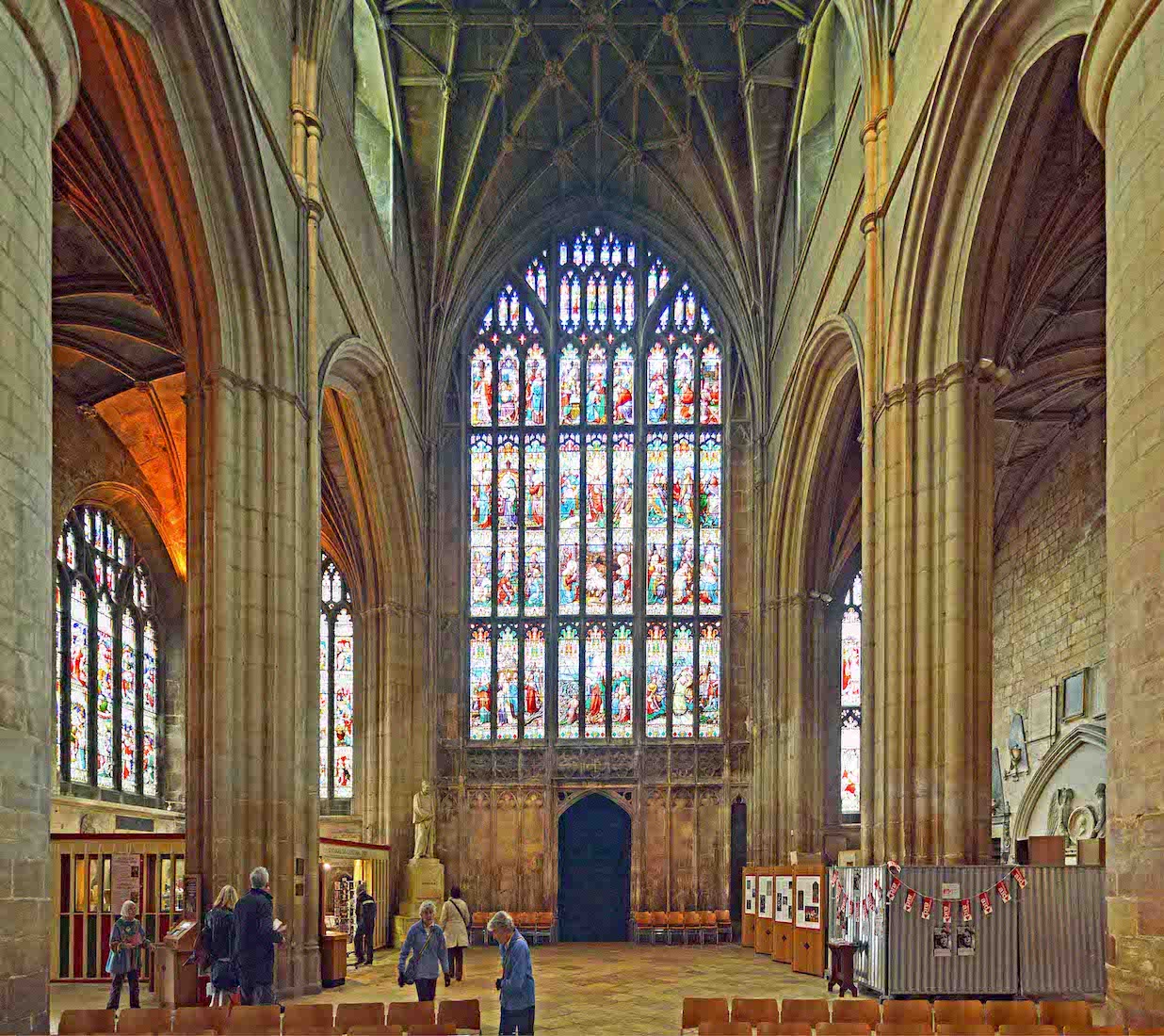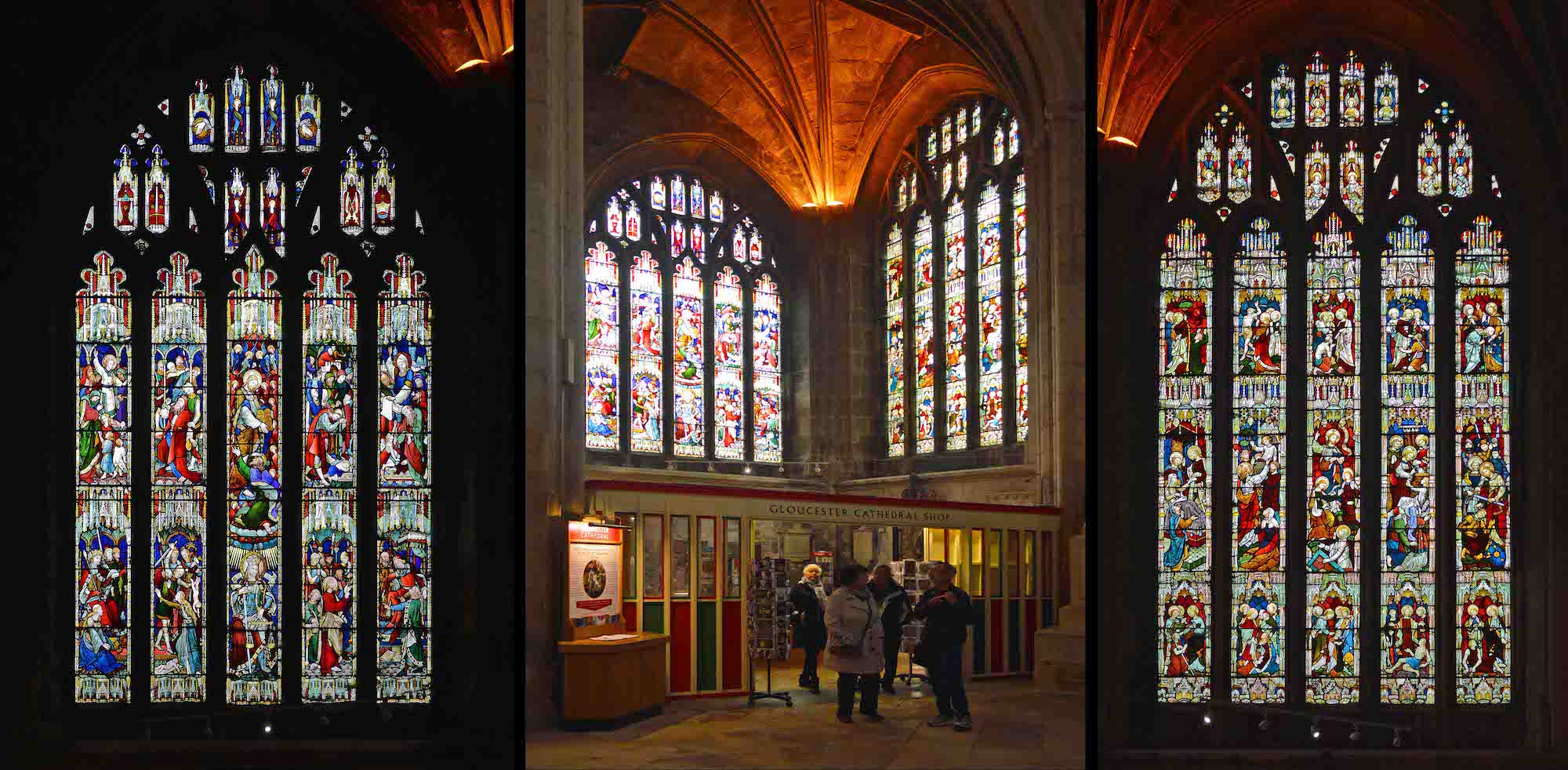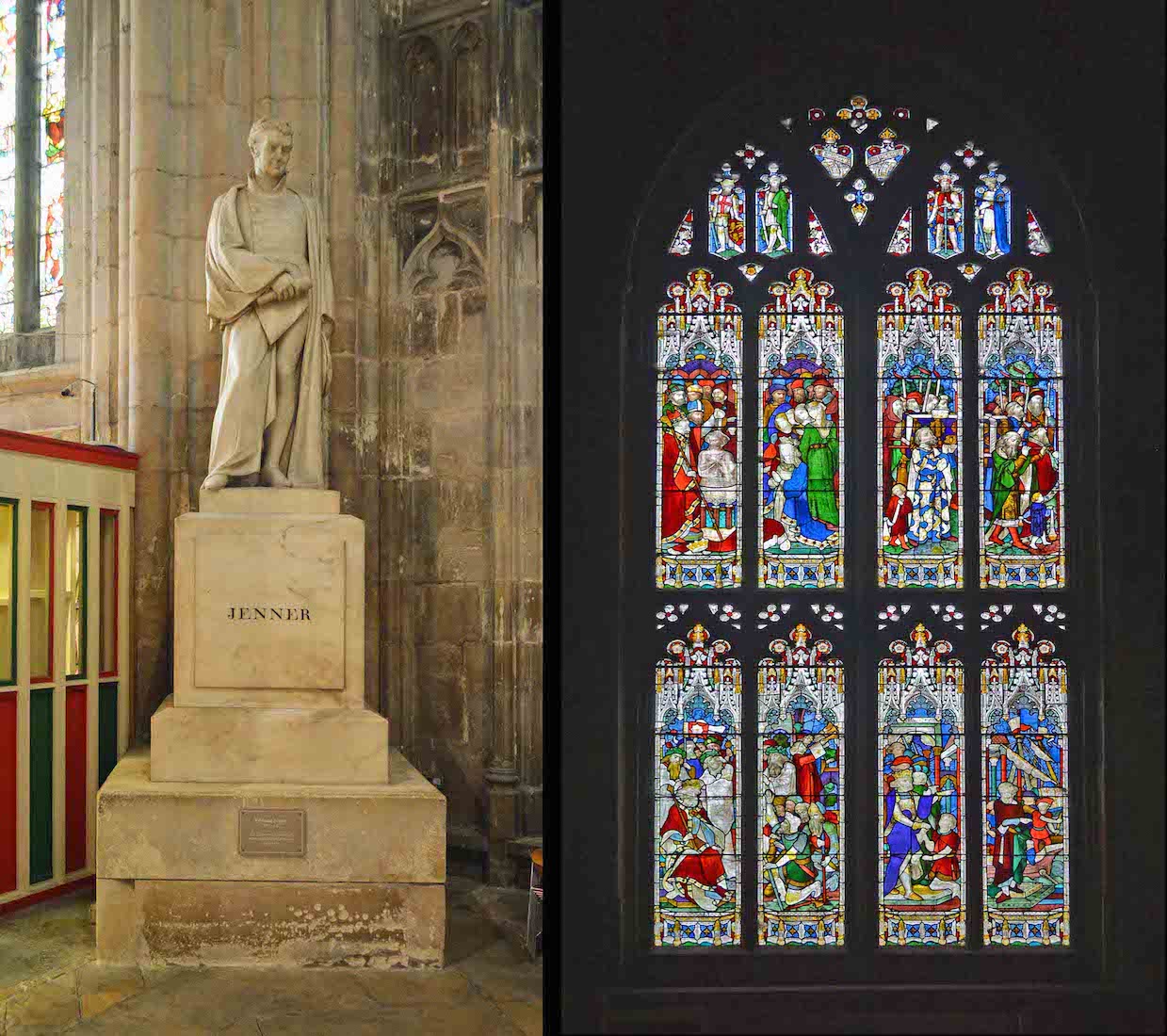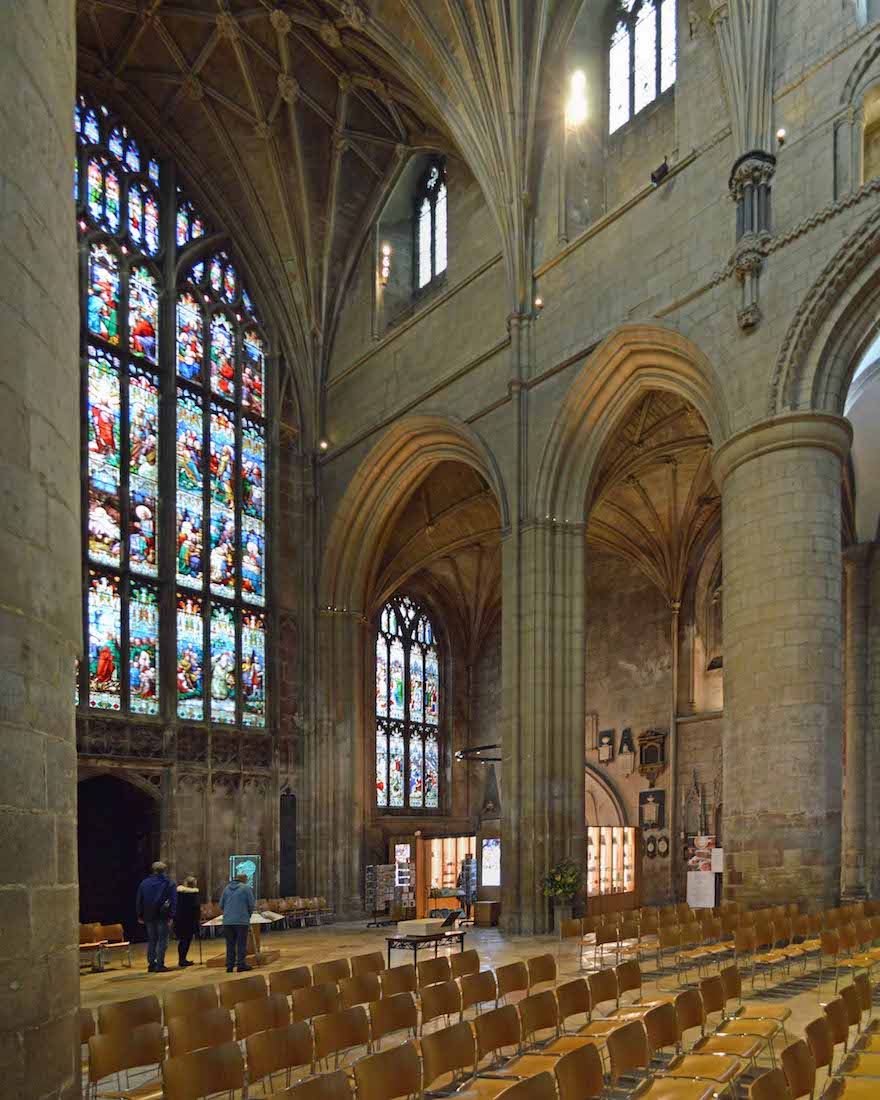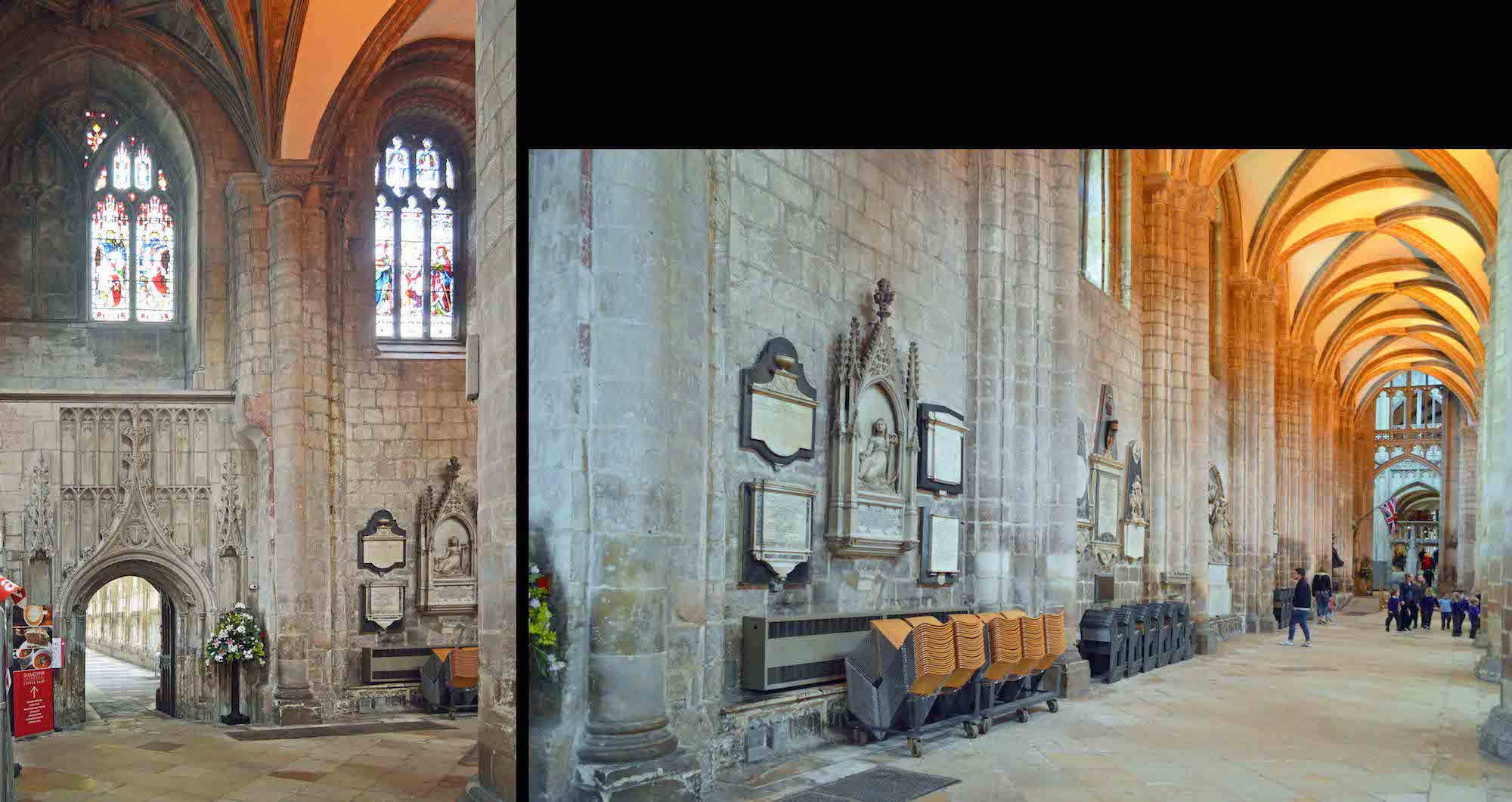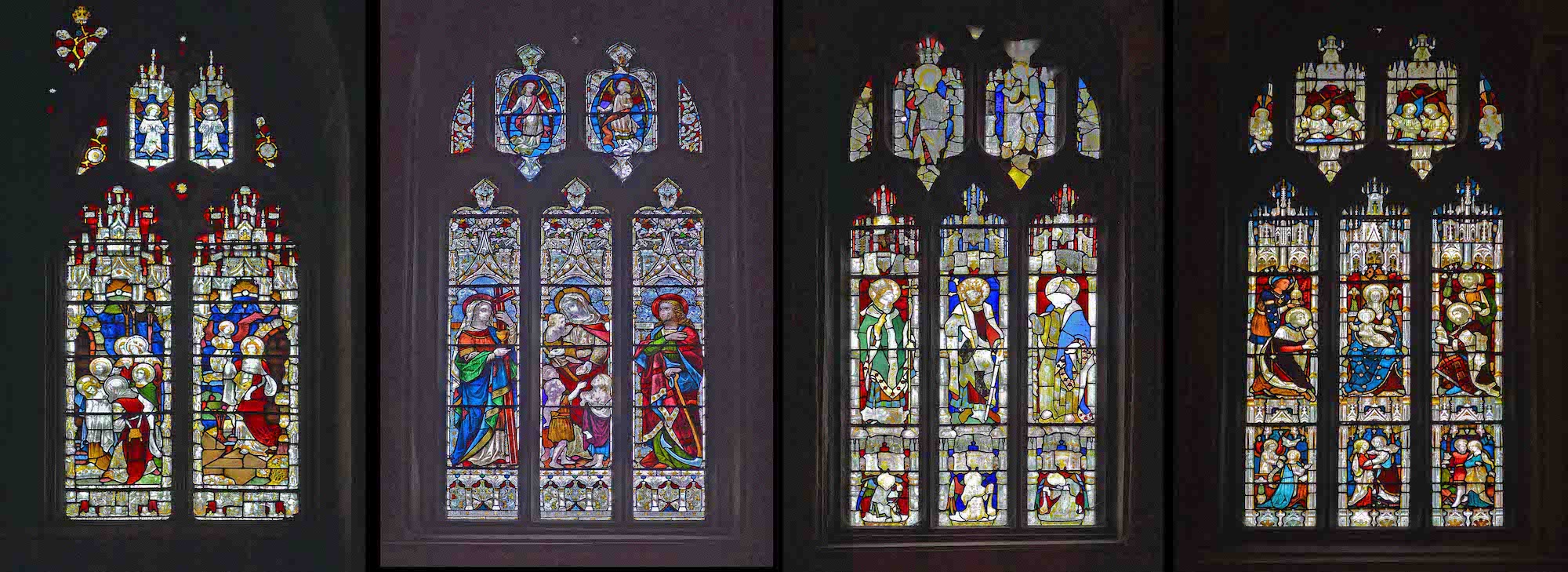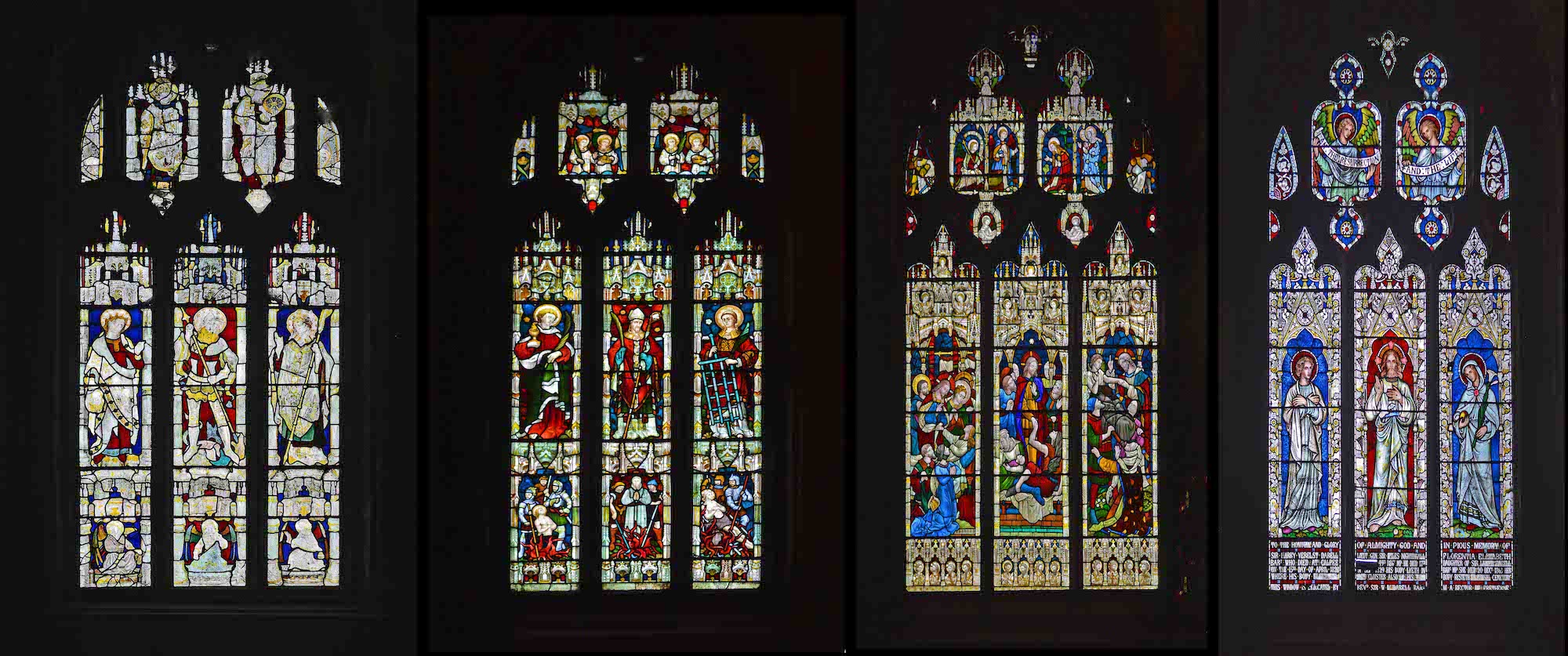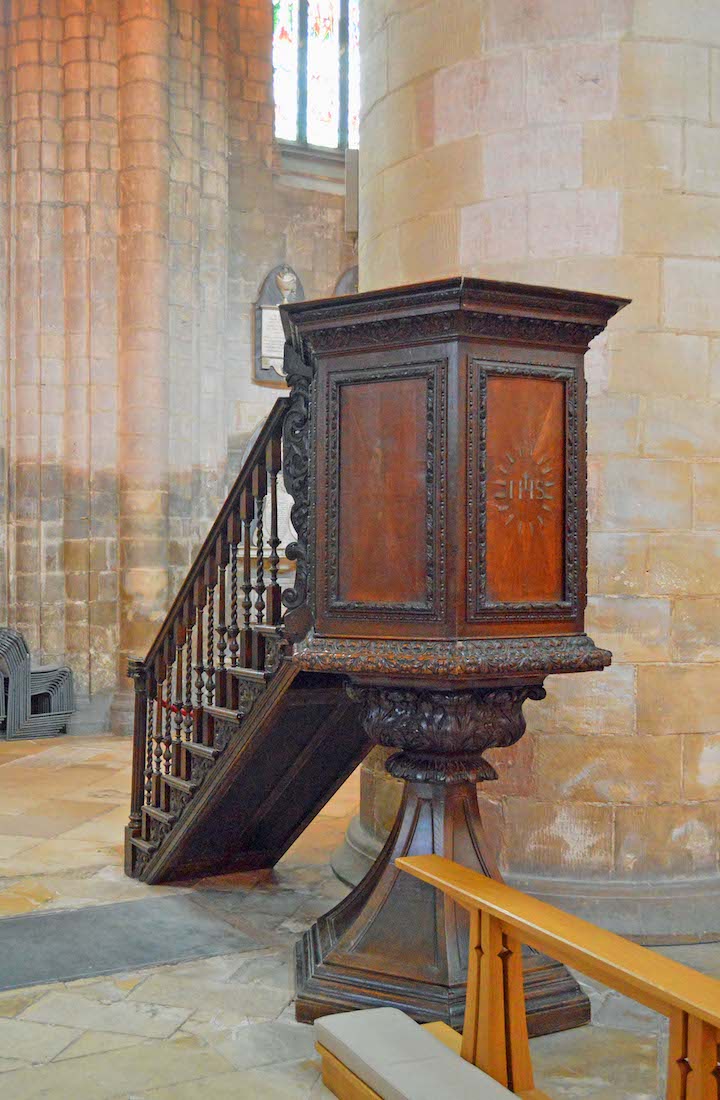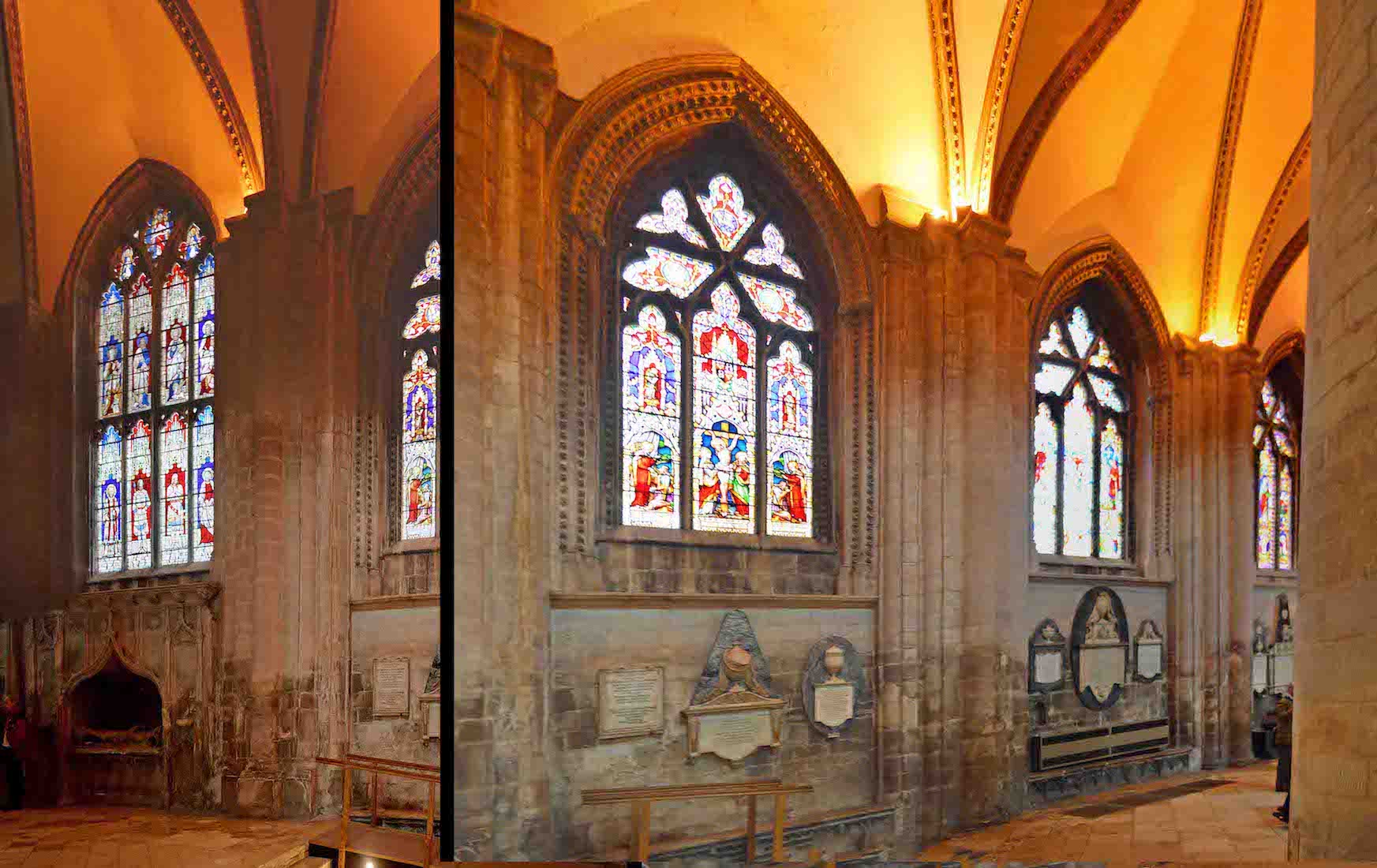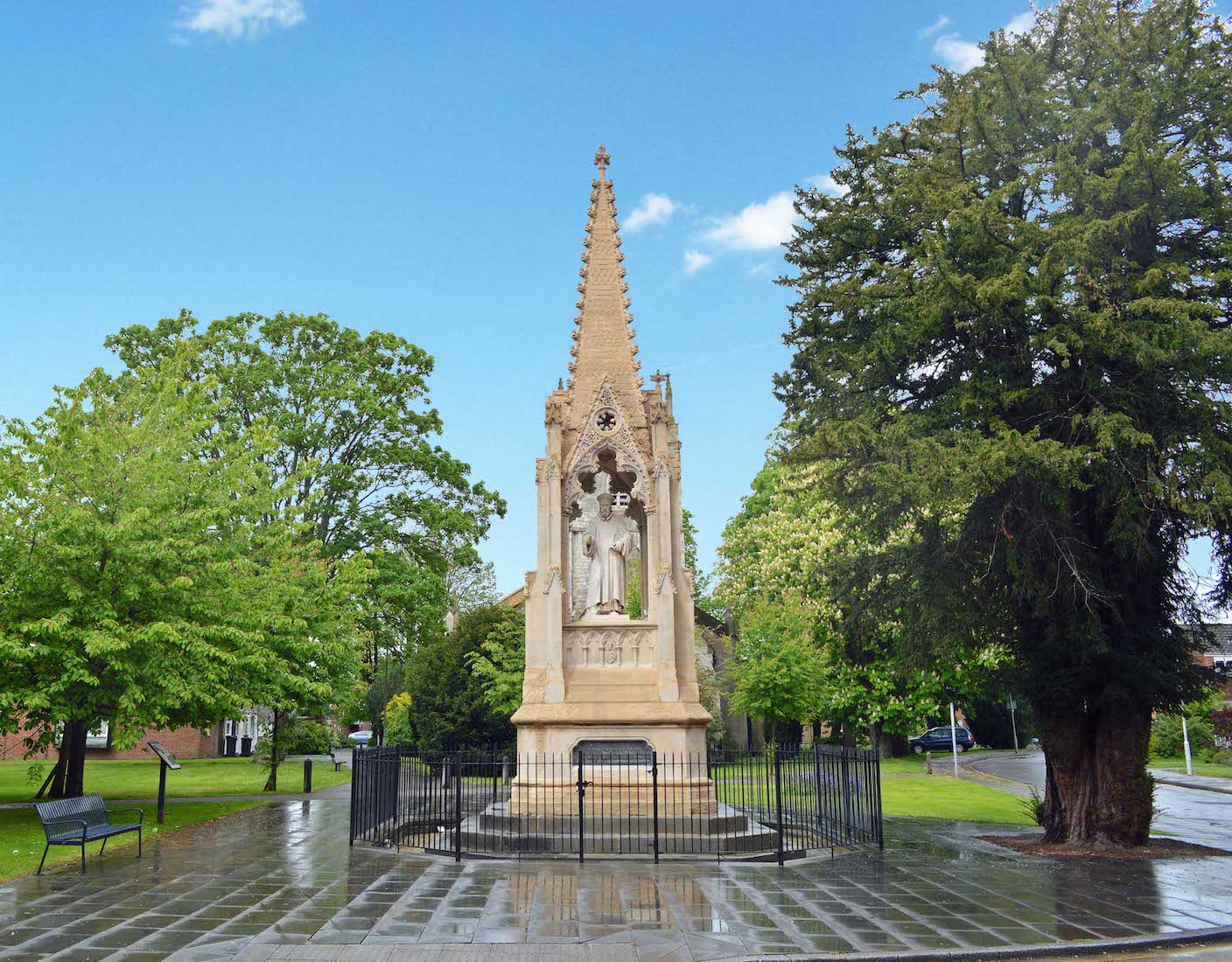
Facing the Gate, and outside, is this memorial to John Hopper, Second Bishop of Gloucester, who was martyred in 1555 for his Protestant faith. ••• Gloucester Cathedral has endured through the centuries as a place of Christian witness where God is worshipped and the gospel of Jesus Christ is proclaimed every day. . PLAN
22. WAR MEMORIAL
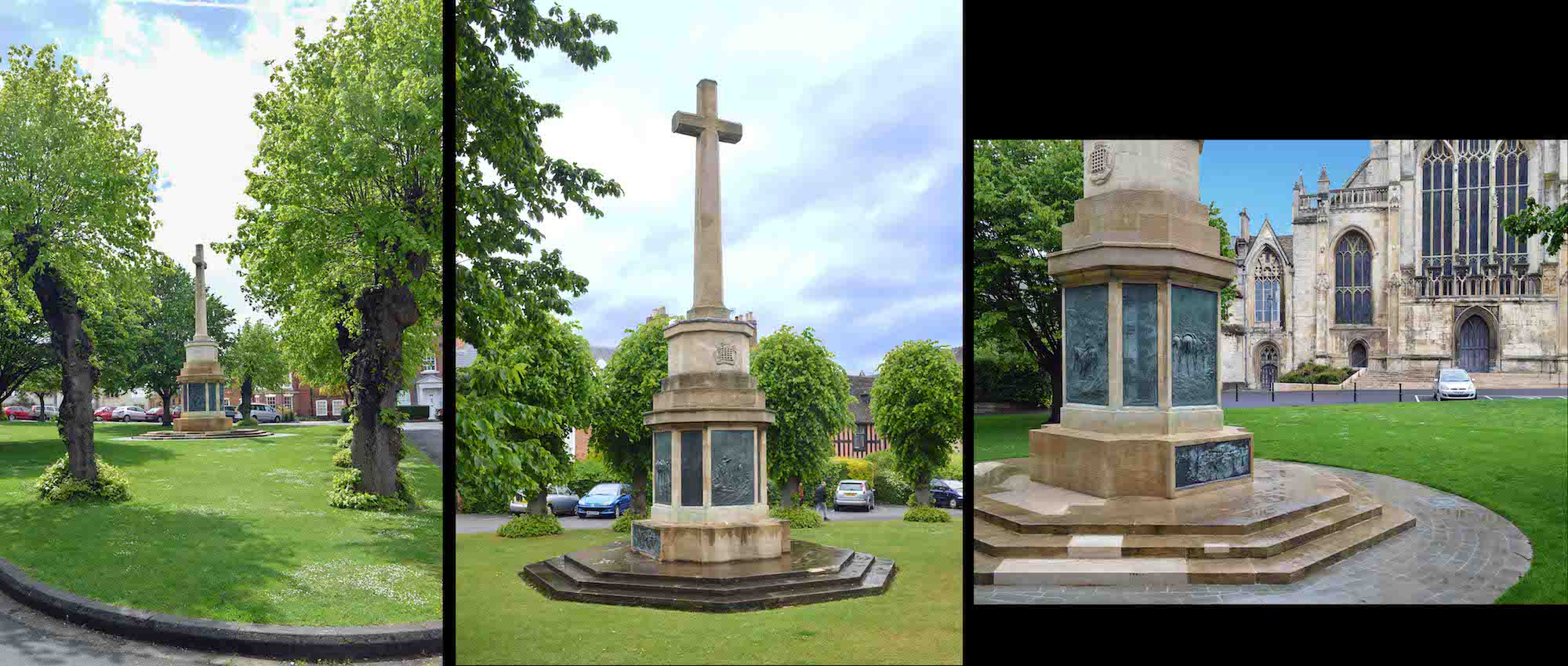
Coming back inside the wall of the Cathedral Close we move to the War Memorial in Lower College Green which faces onto the West wall of the Cathedral. The Memorial was rededicated in 2018 after being restored. It stands in memory of all those members of the Royal Gloucestershire Hussars who died in World War One: those whose names are remembered here and those whose names are known only to God.
23. WAR MEMORIAL SCENES
Scenes of battle are depicted around the base of the Memorial. The Royal Gloucestershire Hussars was a volunteer yeomanry regiment which, in the 20th century, became part of the British Army Reserve. It traces its origins to the First or Cheltenham Troop of Gloucestershire Gentleman and Yeomanry raised in 1795..
24. CAFÉ ENTRANCE AND LINK
If we stand near the base of the War Memorial and look back, we see the narrow entrance to the popular Monks’ Kitchen Café. The arch to Palace Yard is out of sight to the left, and various other buildings link to the right to the West wall of the Cathedral..
25. WEST WALL
The West wall is an imposing structure. We notice a number of empty niches which once contained statues, and the West window itself has some interesting and unusual buttressing – a sign of unwanted movement in the past.
26. GREAT WEST WINDOW
The Cathedral is noteworthy for its many pointed turrets with crosses. We notice too that from this angle the West window buttressing is almost invisible. As we move on around the Southwest corner, we have completed our circuit of the Cathedral, and it is time to go inside!
27. ENTERING THE CATHEDRAL
The South Door is the main entrance to the Cathedral. The statues around the entry were carved by the English Sculptor James Frank Redfern. Redfern worked mainly for churches, such as the cathedrals of Salisbury, Gloucester, Ely and Bristol. There is a notice here about taking photos: I had no problem, although there may have been a small fee. As we enter, there is a large window on either side.
28. WEST NAVE
Entering the Cathedral we first stand in the nave, looking back towards the Great West Window. We also observe that there is a stained glass West window on either side, and one further window here on the South wall. To the left is the Cathedral gift shop, and a large statue stands nearby. In this 2017 photograph, it appears that the Northwest corner of the nave is being restored.
29. GREAT WEST WINDOW
This window was installed in 1859 as a memorial to Dr J. H. Monk, Bishop of Gloucester from 1830 to 1856. It was made by the large Newcastle firm of William Wailes. There are four main rows of scenes. From the top: • Three Christian baptisms from Acts: those of Paul, of Cornelius, and of the jailer of Philippi. • The Presentation of Christ, the Baptism of Jesus, and John the Baptist preaching by the River Jordan. • The Nativity, with shepherds and kings. • Three ‘watery’ incidents from the Old Testament: Noah with his family and animals after the flood; the Israelites after passing safely across the Red Sea; Naaman washing in the Jordan to rid himself of leprosy.
30. SOUTHWEST NAVE – SHOP CORNER
Two further stained glass windows can be found in the gift shop area. The window at left shows various scenes from the Old Testament, including Solomon deciding over two women’s claims for a baby, Moses and the Tablets of the Law, and Ezra reading from the Book of the Law. The window at right shows various scenes from the life of Jesus – healing, and raising the dead.
31. JENNER STATUE AND NORTHWEST WINDOW
Just outside the shop is the Edward Jenner statue. Edward Jenner (1749 – 1823) was an English physician and scientist who was the pioneer of smallpox vaccine, the world's first vaccine. At right is the West window on the North side of the nave. Old Testament scenes depicted include Naaman washing in the Jordan, the carrying of the Ark of the Covenant, and the coronation of an old king.
32. NORTHWEST NAVE
This is a view of the Northwest nave after the 2017 renovations were completed.
33. NAVE
Now we stand in the central nave aisle and look East towards the organ. The round Norman arches are supported by solid cylindrical columns, almost ten metres high and two metres in diameter. Above these are a small triforium layer and then clear clerestory windows throwing light on the simple vaulted ceiling. There is a single central line of golden bosses. A covered aisle runs along outside each row of arches.
34. NORTH NAVE AND ENTRY TO CLOISTER
We investigate the North wall of the nave. There are eight stained glass windows along this wall with collections of memorials below. Close to us is a doorway – one of two leading through to the cloisters.
35. NORTH NAVE WINDOWS I
The third window from the left is of particular interest here. It is a reconstructed window from C15 fragments by Hardman in 1865 (about half is old). In the tracery lights are St John the Baptist and a saint abbess. In the main lights: a saint archbishop, St Oswald, a saint with a book. There are angels below.
36. NORTH NAVE WINDOWS II
Here again, one of the windows has special interest. The window at left is a reconstructed window from C15 fragments by Hardman in 1865 (about half is old). In the tracery lights: St Thomas Becket, St Catherine; in the main lights: St Dorothy, St George, St Thomas (as a bishop); There are angels below.
37. NORTH NAVE MEMORIALS I
Here are three panels of memorials on the North nave wall. There are many such memorials in this Cathedral. The memorial to Sarah Morley at right is of interest. She died a few days after giving birth on board a ship returning from India in 1784. Mother and child were both buried at sea. The memorial is white marble on black, and is by John Flaxman.
38. NORTH NAVE MEMORIALS II
Again it is the memorial at right which is of interest. It remembers Thomas Machen (c. 1541 – 1614) who was a mercer, was mayor of Gloucester three times, and sat in the House of Commons in 1614. He died leaving considerable property, including Condicote Manor, and bequeathed more than £4,000 (equivalent to £732,000 in 2018) to his family and to various charities. In his monument he is represented kneeling in his mayoral robes, facing his wife. Also featured are their 13 children.
39. PULPIT
We come next to the wooden pulpit which is carved in a somewhat restrained way. The letters IHS representing the name of Jesus appear on the front panel. The Sunday sermon is preached from the pulpit.
40. SOUTH NAVE WALL EAST
We move across to the South wall of the nave. Here we find another seven stained glass windows, with various monuments and memorials beneath.


